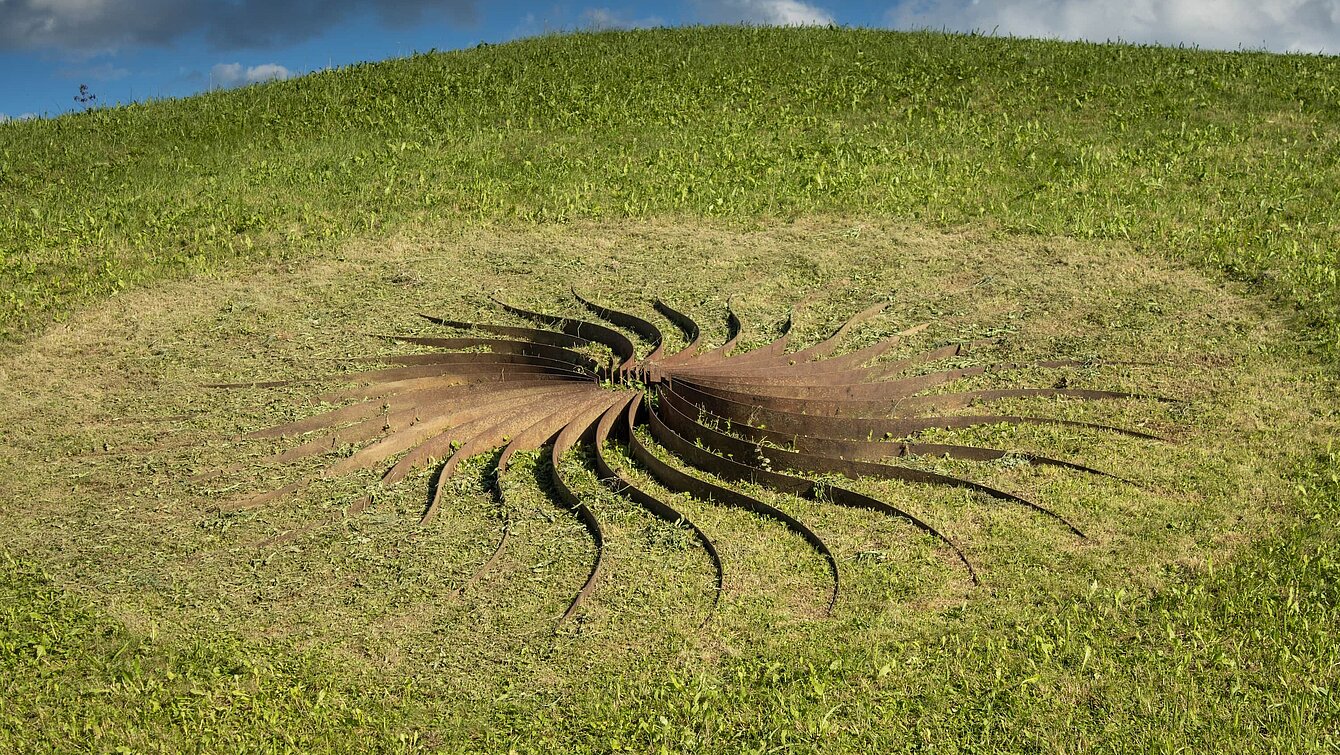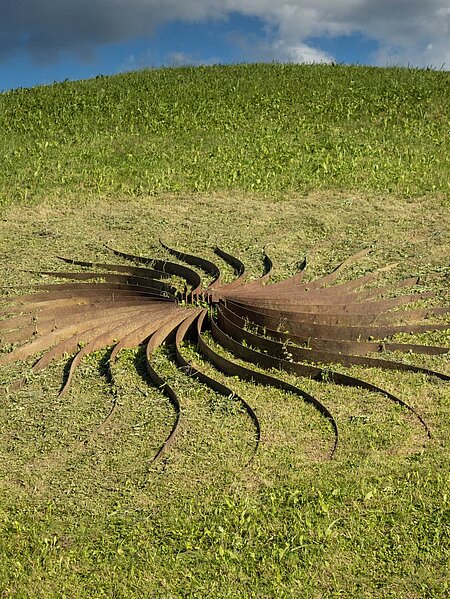Sun of steel is the title that poet and artist Šoškić gives his sculptural ‘power centre’, which consists of 30 curved steel rays radiating from a dome of flint. The resulting shapes resemble the heavy petals of a flower in a warm rusty red, and they change their appearance depending on the incidence of light. Although Šoškić draws links between history and myth with respect to the present, the evocation of symbols is ultimately only of secondary importance to him. His main focus is a ‘politics of the sensual’ – the immediate perception and experience of the work.
Sole d'acciaio
Ilija Šoškić, 1989


Image Credits
Author
Walter Titz
Location on map
Position 16
Owner
Galerie Bleich-Rossi
Artist biography
Ilija Šoškić
Show all
About the sculpture
"Sole d'acciaio", "Sun of steel”, is the title of Ilija Soskic’s sculptural “power centre”. Here, the gruff Montenegrin poet has arranged thirty steel rays around a cupola made of flint stone. The surfaces of the heavy “petals” oscillate between a harsh shade of blue and a warm, rusty red, and change their aura depending on the incidence of light.
An Italian critic referred to Soskic’s work as “materialismo magico, "magic materialism” (Soskic has been living in Rome for nearly forty years, apart from short periods spent in his native country). This tag applies to many works by this artist, who grew up on the fringes of Arte Povera. Not only Soskic’s “sun of steel” pulsates with this “magic materialism” – a gigantic starfish that the artist created around the same time also radiates a similar energy, as does the “arcobaleno d'acciaio", a “rainbow of steel”, which arched over the staircase to the mausoleum in Graz in the late 1980s.
Ilija Soskic’s works range from drawings over performance art to sculptures and installations and contain both Mediterranean elements and features of the region that is commonly referred to as the “Balkans” (according to ancient Slavic mythology, Ilija is the god of lightning.) Soskic links history and myth with a view to the present. In this, he closely resembles Jannis Kounellis.
Railway sleepers and raw eggs, stone and wax, feathers and, as in this work, steel – Soskic shows great imagination in the way he uses symbols, but, ultimately, the evocation of symbols is of secondary importance to him. For Soskic as a wanderer between the worlds, a “politics of the sensual”, the immediacy of the experience, must be at the centre of all his endeavours. The means Soskic uses to achieve this are not always of the meditative kind that are on display in "Sole d'acciaio". In 1975, Soskic shot a hole in the wall of a gallery with a revolver. The title of the work: “Maximum energy, minimum time.”



















